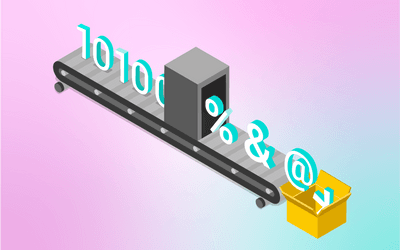How to keep your data secure with a defence in depth approach
In today's digital age, software applications are at the heart of nearly every business operation. From managing customer data to facilitating transactions, these applications underpin the success of any organisation.
However, with the increasing frequency and sophistication of cyber-attacks, like the recent MediaWorks hack here in New Zealand, it's more important than ever to implement robust security measures to protect your applications and the sensitive data they handle.
One of the most effective strategies for securing your software applications is a “Defence in depth” approach.
This strategy involves implementing multiple layers of security controls to protect against a wide range of threats. By combining various security measures, you can create a more resilient and secure environment for your applications.

Imagine your home, with all your valuables stored inside. You wouldn't rely solely on a single door lock to protect your home, would you? Instead, you employ multiple security measures to protect against potential intruders.
At the outermost layer, you might have a sturdy fence around your home, equipped with motion sensors and security cameras to detect any unauthorised activity. Beyond that, there could be a gated entrance.

Once inside, there will be additional security measures such as alarm systems, guard dogs, locked doors and finally the most valuable items will be secured within a safe. Each layer of defence adds another obstacle for intruders to overcome, making it increasingly difficult for them to reach their target.
Similarly, in the world of software applications, defence in depth involves implementing multiple layers of security controls to protect against various threats. Just like the home analogy, these layers work together to create a robust defence that makes it challenging for attackers to compromise the system even if they manage to bypass the outer security. An attacker could plausibly drop down the chimney, or tunnel underground and come through a hole cut in the floor — so ensuring deeper layers of security will help guard against attacks that bypass your well guarded perimeter entirely — such as social engineering, or phishing attacks.
What does that look like in terms of software?
- Secure Coding Practices: The first line of defence is to ensure that your software is developed using secure coding practices. This includes following best practices for input validation, authentication, and access control. By writing secure code from the outset, you can reduce the likelihood of vulnerabilities that could be exploited by attackers. This also includes development processes: by enforcing merge reviews, where other developers check the code before it is published, you can prevent ‘inside jobs’ — accidental or otherwise!
- Network Security: Implementing network security measures such as firewalls, intrusion detection systems, and virtual private networks (VPNs) can help protect your applications from external threats. These measures can prevent unauthorised access to your network and detect and block malicious activity.
- Application Security Testing: Regularly testing your applications for vulnerabilities is essential for identifying and addressing potential security weaknesses. This can include conducting penetration testing, code reviews, and vulnerability scanning to identify and remediate any issues.
- Data Encryption: Encrypting sensitive data both in transit and at rest can help protect it from unauthorised access. This can include using encryption protocols such as SSL/TLS for data in transit and encryption algorithms such as AES for data at rest.
- Access Control: Implementing strong access controls is essential for ensuring that only authorised users have access to your applications and data. This can include using role-based access control (RBAC) to assign permissions based on user roles and implementing multi-factor authentication (MFA) for an added layer of security. One crucial aspect of risk mitigation is adhering to the principle of least privilege. This principle dictates that users (and systems) should be granted the minimum permissions necessary to perform their job functions, thereby limiting their access to sensitive resources.
- Incident Response Plan: Despite your best efforts, security incidents are inevitable. Having a robust incident response plan in place can help you quickly detect, respond to, and recover from security breaches. This can include having a designated incident response team, conducting regular drills, and documenting procedures for responding to different types of incidents.
- Regular Updates and Patching: Keeping your software applications up to date with the latest security patches is essential for protecting against known vulnerabilities. This includes regularly updating your operating systems, web servers, and other software components.
By implementing a defence in depth strategy for your software applications, you can significantly reduce the risk of security breaches and protect your organisation's sensitive data. While no security measure is foolproof, taking a layered approach can make it much more difficult for attackers to compromise your applications and systems.

